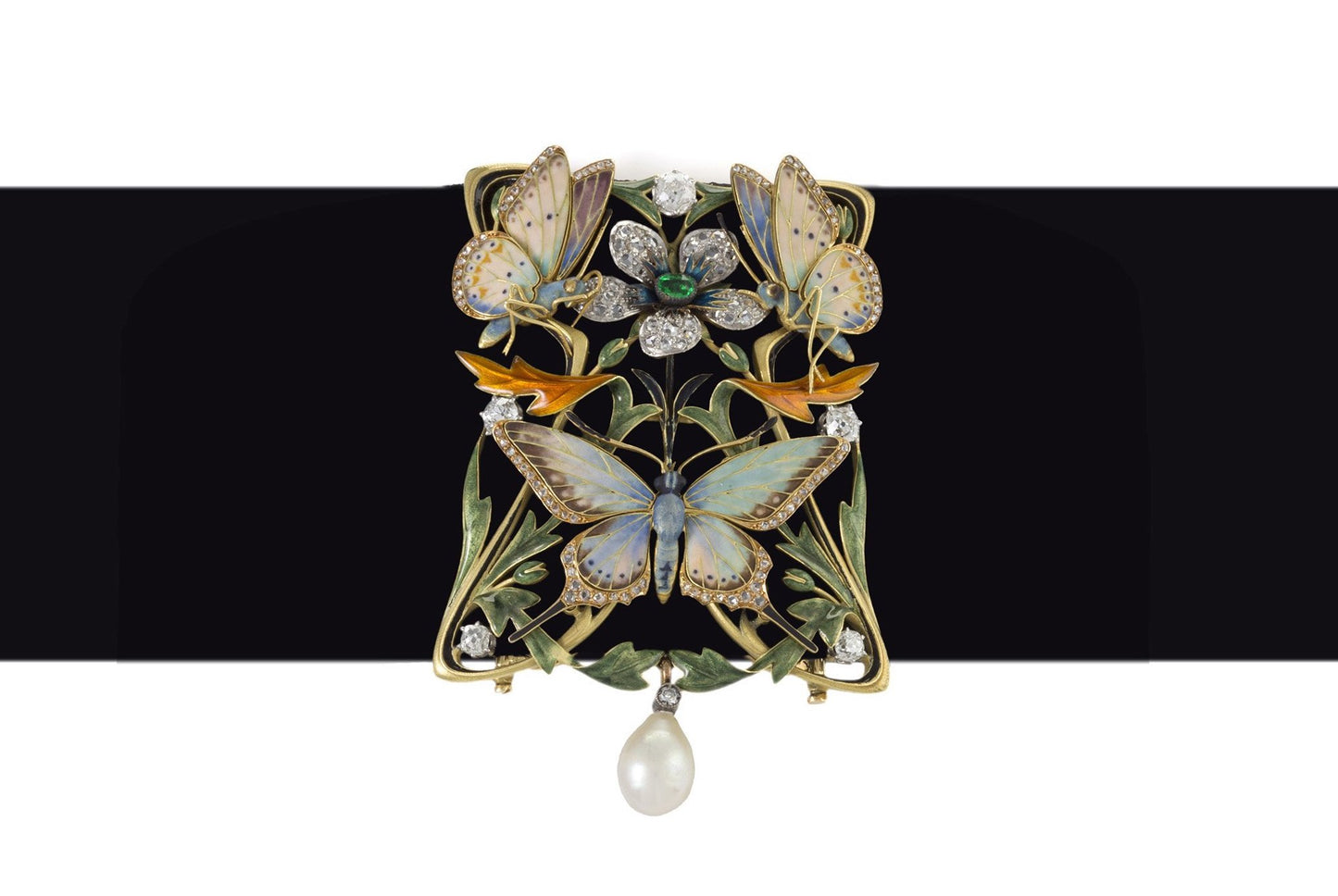René Lalique Diamond and Carved Crystal Brooch
Item #: BO-21495
Artist: René Lalique
Country: France
Circa: 1905-1906
Dimensions: 3" length, 1.5" width.
Materials: 1 carved crystal glass; 1 old pear cut diamond (with approximate total weight 2.51 carats with SI1 clarity and F color grade); 1 sugar loaf moonstone; old mine single and rose-cut diamonds; Platinum
Signed: LALIQUE
Documentation: Together with GIA report no. 2239207286 dated 27 February 2024 stating that the pear-shape diamond is F color, SI1 clarity.
Literature: A small number of brooches and pendants of reverse-carved crystal glass are pictured in René Lalique, Schmuck und Objets D'art 1890-1910, by Sigrid Barten, including figures 806, 807, 809, and 810. No. 806, a pendant necklace, has been in the collection of the Metropolitan Museum of Art since 1944.
Item #: BO-21495
Artist: René Lalique
Country: France
Circa: 1905-1906
Dimensions: 3" length, 1.5" width.
Materials: 1 carved crystal glass; 1 old pear cut diamond (with approximate total weight 2.51 carats with SI1 clarity and F color grade); 1 sugar loaf moonstone; old mine single and rose-cut diamonds; Platinum
Signed: LALIQUE
Documentation: Together with GIA report no. 2239207286 dated 27 February 2024 stating that the pear-shape diamond is F color, SI1 clarity.
Literature: A small number of brooches and pendants of reverse-carved crystal glass are pictured in René Lalique, Schmuck und Objets D'art 1890-1910, by Sigrid Barten, including figures 806, 807, 809, and 810. No. 806, a pendant necklace, has been in the collection of the Metropolitan Museum of Art since 1944.





















